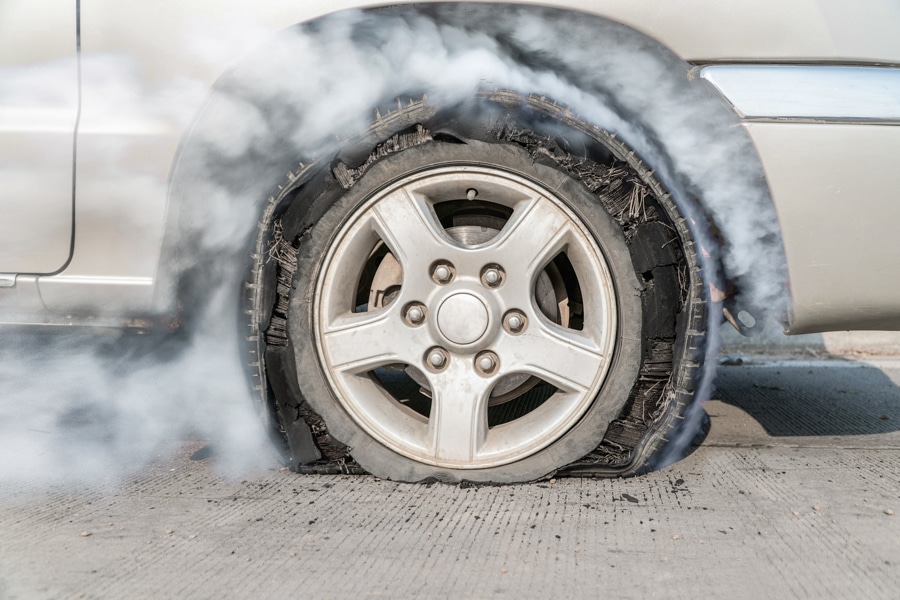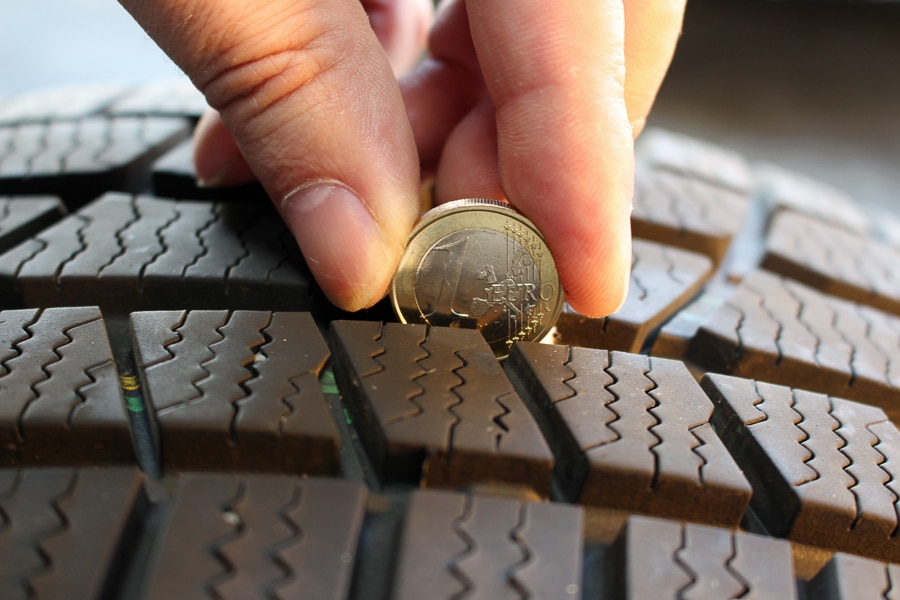If it hisses or pops, it’s already too late. A broken tyre can be really dangerous, not just on the motorway. However, critical situations can be avoided by identifying tyre damage at an early stage. The problem is that many drivers do not really know how to recognise the warning signs that signal an imminent flat tyre. In our article, we explain how to recognise when a tyre is nearing the end of its useful life.
If you can recognise the early warning signs of a broken tyre and take action accordingly, you can prevent even more serious damage in the worst case. The good news is that, generally, you do not have to be a tyre expert to identify a car tyre that already has a puncture. Drivers should, however, take heed of some advice:
Carefully analyse the noises coming from the car
If something in the car isn’t running smoothly, you can often hear it even from inside the vehicle. This also applies to a broken tyre, which does not sound the same as an intact summer or winter tyre. If you think you can hear something strange, the first thing to do is to mute the radio and all other possible sources of noise. Then you should listen out for changes in driving noises, such as clattering, humming and droning, which could come from the tyres or from the wheel housings. If you notice a new, unusual noise, you should pull over at a suitable point on the side of road and thoroughly examine the tyres.
Pay attention to the steering
Has the steering become loose, or does it no longer feel the same as usual? Does the vehicle suddenly pull to one side all by itself? If so, the air pressure in the tyre is probably no longer right. The same applies here: Brake slowly, drive to the side and check the tyres for faults.
The right thread depth
Check the tread pattern regularly because worn tyres can quickly become a safety risk. It is not for nothing that a legal minimum tread depth of 1.6 mm applies to car tyres in Europe. The tread depth can be roughly checked with a 1 euro coin, because the golden edge of the coin is exactly three millimetres wide. To do this, the coin must be held in the middle of the tyre tread. If the gold edge disappears, you can continue driving. The tyre then loosely meets the legal minimum tread depth. However, if part of the golden edge is visible, you should consider changing the tyre.
Monitor the tyre pressure on a permanent basis
A more or less significant reduction in air pressure is often a pretty sure sign of a broken tyre. Since 1 November 2014, all new cars have been fitted with a tyre pressure monitoring system (TPMS) for permanent monitoring. It uses sensors to continuously measure the pressure inside the tyre and, in the event of strong pressure fluctuations, sends an error message in the cockpit. Subsequently, the yellow control lamp lights up (tyre cross-section with an exclamation mark). If you don’t have this type of warning system, you should regularly check the air pressure in the tyres – either every other time you stop to fill the tank or on a regular basis every 14 days.
Replace old tyres
The older a tyre, the more the side walls start to become brittle and fragile. This is why car tyres should be replaced with new ones after ten years at the latest. You can tell how old a tyre is from the four-digit DOT number on the side wall: the first two digits indicate the calendar week in which the tyre was produced. The next two digits indicate the production year. Example: the code 2215 means that the tyre was produced in calendar week 22 in 2015.
In general, the following applies: if in doubt, always stop by the workshop, just to be on the safe side.
This is how you prevent a defect from occurring:
- Even if a tyre appears pretty robust at first glance, you should still avoid driving over pointed objects and sharp edges. This could damage the surface of the tyre, cause water to penetrate the tyres and corrode the steel sheath on the inside.
- One thing that isn't healthy for tyres is when they are squeezed right up against the edge of the curb. This could damage the tyre carcass.
- When parking, it is also not advisable to park the car in such a way that the wheels on one side are only half on the curb. This means that all of the weight is borne by just a fraction of the tyre surface, which would otherwise be supported by the entire width of the tyre. Tyres are not designed for this.
- Always pay attention to the correct air pressure.
- You should also never exceed the maximum permissible speed of the tyre. This is specified through the speed index (e.g. "T" for a maximum speed of 190 km/h) specified on the outside of the tyre. If you drive too quickly for too long, the tyre is at risk of excessive overheating and, in the worst-case scenario, could burst at high speed, which is extremely dangerous.
- Always have the tyre change carried out by a specialist, as improper installation can lead to irreparable damage.
Maintain and store tyres correctly
The storage of winter tyres and summer tyres is also very important; they should be stored in a cool, dark and dry room. It is also essential to avoid contact between the rubber and oil, grease and solvents. Complete wheels, i.e. tyres mounted on the rim, can be stacked on top of one another or, alternatively, on a tyre tree.




